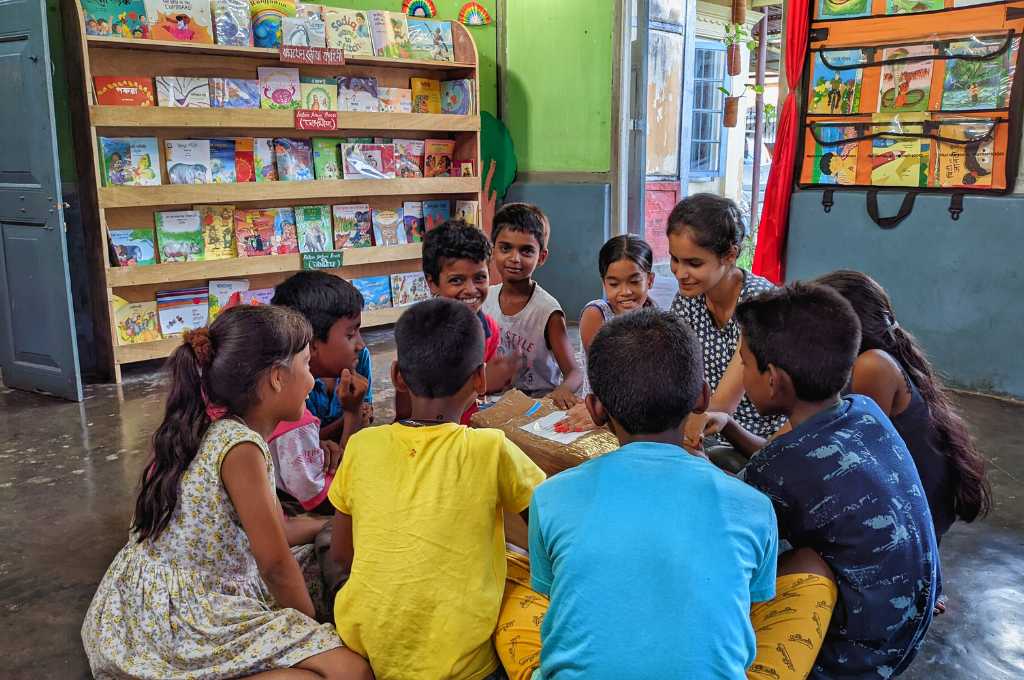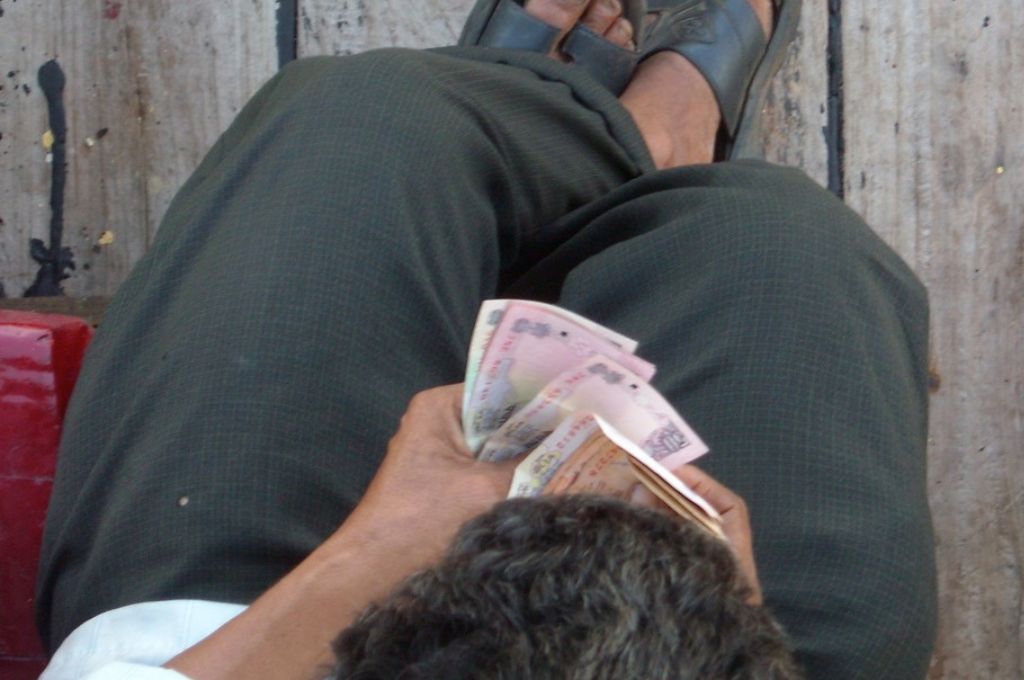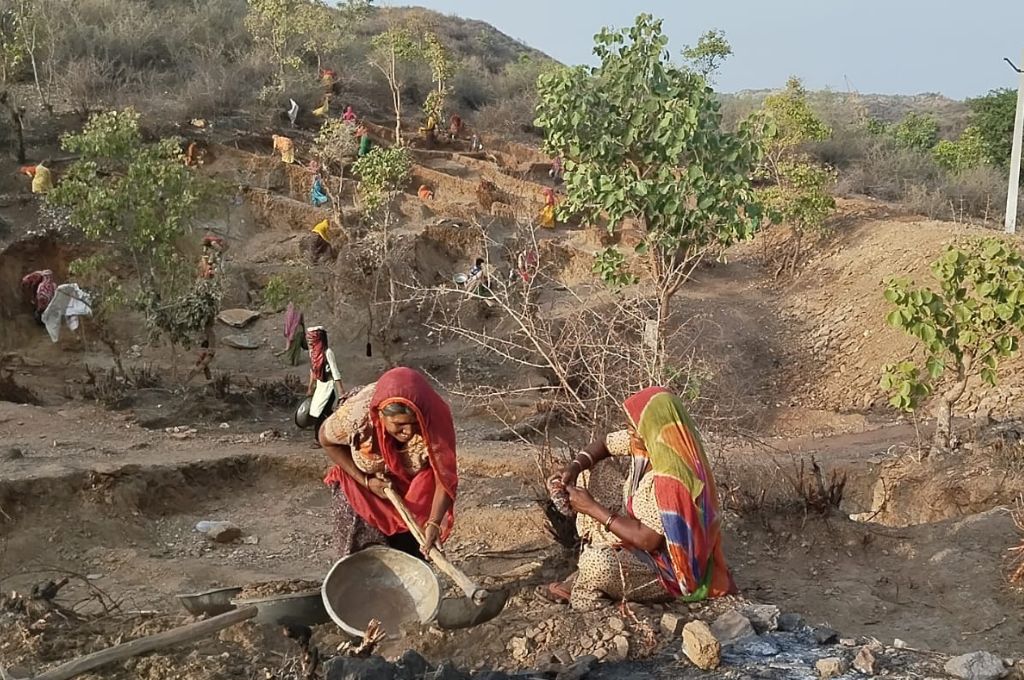“How do we revive the habit of reading?” is a phrase you often hear. But this question echoes an inherently false narrative—one that supposes the existence of a habit shared by everyone, when in fact this habit has historically, in India, been the exclusive purview of the powerful and privileged few. So let’s instead ask: Why have we never had, and continue not to have, a public library system that concerns itself with making knowledge and information resources—primary among them books and the internet—available to all, without exclusion? When we reframe our anxiety from being one about reading habits to one of reading access, there is another, more powerful word to consider: free.
When ‘free’ is prefixed to ‘public library’, it immediately redraws the lines of who deserves to have the right to read and the right to information. Doors and shelves are thrown open to all. It is by default, definition, and design anti-caste, gender and disability inclusive, and accessible to all regardless of their social or economic background.
This is not a new understanding of the public library. The earliest instance in modern India goes back to 1906 when Sayajirao Gaekwad III, the maharaja of Baroda, invited the American librarian W A Borden to help establish public libraries across his state to further his public education programme. Fast-forward to 1986, when the Chattopadhyay committee drafted the National Policy on Library and Information System, which linked access to equity. But little came of it in terms of reform. The draft was never ratified into policy.
In recent years, and especially during the COVID-19 lockdown, grassroots efforts have sprouted free libraries across the country, most notably where quality education and access to books has generationally been lacking. Even before the pandemic broke out, librarians in villages, urban working-class neighbourhoods, remote outposts, tribal settlements, and prisons began talking to one another, seeking resources on librarianship and library infrastructure. These conversations coalesced into the Free Libraries Network (FLN), which today has more than 200 library organisations, practitioners, and activists who drive the free library movement. We envision not just support for our own individual struggles in running community libraries but also a free public library system for all.
A public library must be free on two counts—free from any kind of fee, be it for membership, penalty, or a service like the use of the internet or a workshop; and free from barriers of caste, class, gender, and disability, giving everyone the freedom to read to acquire knowledge and information. If libraries are not free, how can the country achieve intellectual equity? FLN focuses its attention, among other things, on the 1986 draft national policy, from which the provision for ‘free’ has been summarily discarded in reports written through the 1980s. In 2022, when a Rajya Sabha review committee revived the conversation to centre libraries as a critical component of culture and education, there was no mention of ‘free’ as an essential understanding of public libraries.
The Indian public library system
What would our public library system tell us about the intellectual health of the country? Today, we see the consequence of ignoring equity in knowledge and information when, as a collective, we are unable to tell good pieces of information from bad ones, and cannot discern when someone is pushing us towards herd thinking. Policy focus all along has been on school-led, curriculum-based literacy and numeracy. But creative and critical thinking, which are the bedrock of a progressive society, have not been championed with the same vigour. What that omission has cost us is tremendous: a loss of intellectual discernment and the ability to imagine an equitable world.
A free public library system can change that.
India reportedly has 54,856 public libraries (although there is no definitive source and data differs depending on where one looks), but many suffer from systemic neglect. There’s no clarity on which library is open, which is shut, which programmes and curriculum a library follows to invite readers into reading and, most importantly, which is free and which isn’t. Without updated and accurate data, how can we start rebuilding our public library programme?
Public libraries in India are the prerogative of the state, yet only 19 states have formulated library legislation. Of these, The Haryana Public Libraries Act, 1989, is the only one that claims to grant free public access. Yet, despite legislation, Haryana’s public libraries are not really free. It should be noted that a library cess, derived from state revenue taxes, pays for the upkeep of these libraries—in other words, the public funds them.
Now consider the Delhi Public Library, which falls under the purview of the Union Government. The membership fee is INR 25 for below poverty line (BPL) card holders and INR 100 for others. Those who apply must have membership forms attested by a ‘responsible person’, such as a gazetted officer or lecturer, or produce INR 3,000 as security deposit if attestation is not possible. Membership is also contingent on proof of current residence. Even if the fee were not a deterrent, the demand for documentation is.

The free library as a public good
Enter a public library today and you’ll think it continues to serve centuries-old purposes of academic education alone, because you’re more likely to find students preparing for an exam than any other demographic. But public libraries are meant for more than that. They are public places that transform into hubs of collective imagination and free-thinking spaces for people to gather, to create, to think collectively and build something for the future. Such collective spaces are key to human development. As the IFLA-UNESCO Public Library Manifesto points out, community libraries foster local connections and are crucial to creating a well-informed citizenry required for a healthy democracy.
It must be reimagined not just as a place for learning and thinking but also as a space for social and cultural engagement. To that end, a free public library can emerge as that third place between home and work—for people to gather, socialise, and actively build community life. This means the library has a huge role to play for non-readers too.
Community at the core
A free library is defined by its collective of people and not just its collection of books. In fact, the community exercises ownership over the library and is empowered to determine library programmes, book collections, languages, reading levels, and reading aspirations. For example, you may have adolescents coming in, who are at an age where they’re interested in exploring various kinds of relationships with one another. One cannot, as a free library worker, exclaim, “Oh my God, keep them apart!” A library that responds to its members will wonder, “Can we organise sexual health and wellness workshops for them, in addition to building a collection that speaks to their interests as well as broadens them?” That’s what makes the library a dynamic space—the fact that it is constantly in dialogue with the community.
Whoever lives in the community communes at the library, making the collective diverse and inclusive.
When it sets out to be a welcoming space, the library automatically transforms into a multi-generational, multicultural oasis. In one of the libraries I work at in Delhi, the neighbourhood (Khirki) includes people of different religions and caste identities, migrant workers from Bihar and West Bengal, as well as asylum seekers from countries such as Afghanistan, Somalia, Iraq, and Syria. Whoever lives in that community communes at the library, making the collective diverse and inclusive.
It’s only when there’s dialogue between the community and the people who fund the library that the idea of the free library is truly safe. It is not ideal for any single group outside the community to hold sway on critical operational and policy decisions. That’s why it is essential to define librarianship as best practices and curriculum that derive from community consultation. For example, if the community indicates it requires Ambedkarite literature or books about the Mughals, the library has to provide them.
Even as it sets out to be a democratic, egalitarian space, the public library must guard against excessive regulation, for anyone who controls the library controls knowledge and information flowing through the library. This is another reason to urgently push for library reform, and ensure that the library is driven by policy but is not policed.
What the government is doing
The National Mission on Libraries was launched in 2014 with an outlay of INR 400 crore to develop model libraries and create digitised archives of books, manuscripts, and audio-visual material through the National Virtual Library. But given how inequitable digital access is in India, this is still not an example of an accessible public library that anyone and everyone can use. The questions to consider when pushing for a digital library are: who has access to the internet, who has access to smart devices that can browse a platform like the National Virtual Library, and what kind of digital literacy do they need to enter it? When you start asking these questions, you realise that in this country, digital can emerge as yet another barrier between people and reading. Many in the publishing industry are also pushing digital books, to the detriment of print. What they’re in turn widening is the gap between a majority of Indians and books at a time they need it the most.
Perhaps these are concerns that the government needs to address at its upcoming Festival of Libraries 2023, an initiative by the Union Ministry of Culture. New library policies, fresh funding (INR 100 crore), and a library ranking system, among other initiatives, are expected to be launched at this forum, with the objective of reinvigorating the country’s library system. It’s a welcome move as long as it keeps the public library people-focused. ‘Sabka Saath, Sabka Vikas’ won’t happen as a matter of injunction. You cannot order people to move together but you can structure the possibility of their meeting one another, of finding common cause and forming solidarities in the world of ideas. This can only come from creating free spaces. That’s the beauty of the publicly funded free library—a free intellectual, social, and cultural space that supports the aspirations of all and is powered not by the individual and not by the government, but by the community it was built to serve.
—





